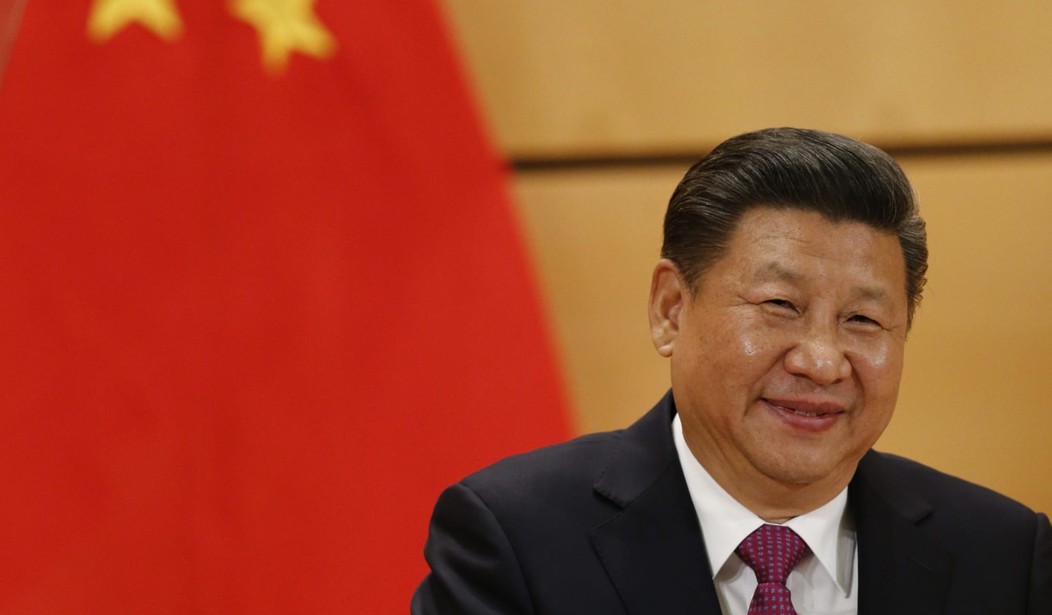The year’s most important news story probably never made it into your news feed. Nonetheless it might change your life forever. For the first time, China has demonstrated that it is far ahead of the United States in a critical new technology, namely quantum communications. A Chinese satellite succeeded in transmitting so-called entangled photons to earth stations. That’s the high-tech equivalent of sending a message in undeveloped photographic film: If you try to read it, the light will destroy it. The Chinese breakthrough has huge implications for cryptography, and for a host of other applications.
The tortoise just overtook the hare. We haven’t woken up from a decades-long nap, and we’re at serious risk of losing the race. If we do lose, there will be a name for an American who works for a Chinese: “Employed.” This is not a drill. This is the real thing.
Chris Scott wrote Friday in Asia Times:
On Thursday, a team of Chinese scientists released findings from a breakthrough study that makes China the indisputable leader in the field of quantum communication, an achievement that could be of immense strategic importance.
The study, led by Pan Jianwei and published in Science magazine, successfully demonstrated the ability to distribute entangled photons across unprecedented distances, from space to earth, opening the door for the practical application of cutting-edge, ultra-secure communication….
Encryption methods used today are nearly, but not completely, impossible to hack, but with more advanced computing power the forms of encoding that protect information sent online will become more and more vulnerable. Quantum key distribution, however, is unique in that any measurement of the transmission by an eavesdropper disturbs the transmission, thereby alerting the parties sending information.
So much for the mantra, “The Chinese steal technology but don’t know how to innovate.” Anyone who has seen China’s tech boom up close knows how dumb this view is. Books with titles like “The Coming Collapse of China” are now in their dozenth edition, while China is surging ahead in key areas of technology. China now graduates 1.3 million STEM students from its universities each year, vs. 300,000 in the US. How good are they? As Prof. Graham Allison reports in his new book The Thucydides Trap:
According to the most recent Stanford University comparison of students entering college in the fields of engineering and computer science, Chinese high school graduates arrive with a three-year advantage over their American counterparts in critical-thinking skills. In 2015, Tsinghua University passed MIT in the U.S. News & World Report rankings to become the number-one university in the world for engineering. Among the top ten schools of engineering, China and the US each had four.
China has the world’s fast supercomputers built entirely out of Chinese components. It has the world’s largest radio telescope. It has thousands of surface-to-ship missiles that can hail down on American aircraft carriers from the stratosphere, and it has ultra-quiet diesel electric submarines that can lurk on battery power for weeks. It has satellite killer missiles. China might spend barely over $1,000 to equip foot soldiers, about 1/100th of what America spends, but it has invested massively in high-tech defense.
Between 1999 and 2013, China’s share of world high-tech exports rose from 3% to 26%, while America’s fell from 18% to only 8%.
A couple of years ago I sat across from the founder of a high-tech start-up in Shenzhen. He showed me an app on his phone with a map of the South China Sea and thousands of dots. “Each one of these is a ship. We know its location, course, speed and the condition of its motor.” How? The data is obtained by sensors mounted on cheap high-altitude balloons attached to the ground by fiber-optic cable. China can field thousands of such balloons, on the coast and on ships. If all the satellites in the sky were knocked out in a war, the U.S. would be blind–but China would still have complete coverage of its own territory and coast.
We need a Kennedy-style Moonshot or a Reagan-style Strategic Defensive Initiative to revive our high-tech industries. We don’t have high-tech companies anymore: We have a set of monopolies like Microsoft and Google that collect rents, and trade with the volatility of a Procter and Gamble. All the technologies that gave us the present economy depended on fundamental breakthroughs in physics. We no longer aim for breakthroughs. We write apps for ever-more-sophisticated toys.
We’re still the hare and China is still the tortoise. China can innovate, but we can innovate better–if we set out do so in all seriousness. By 2019, China’s huge economy will be spending more on R&D than the United States. As a percentage of GDP, federally sponsored R&D (including the military and NASA efforts that really make a difference) has fallen by almost half.
Earlier this year I wrote in the Journal of American Affairs:
The unintended consequences of federally sponsored R&D vastly exceeded the expectations of the projects’ initiators. The economic spinoffs of the technologies invented for urgent national security reasons had incalculable impacts on growth and productivity. None of this could have been pre-programmed. Innovation is unpredictable by definition. The greatest lesson we can draw from both the Kennedy space program and the Reagan Strategic Defense Initiative is that the most productive investments are the ones that test the frontiers of physics. These projects enabled us to fight the next war, not the previous one.
Unlike the Russian space flights of 1957 and 1961, or the success of Russian air defenses in the Yom Kippur War, we can point to no single development to provoke a “Sputnik moment.” Like a frog in a pot of cold water, we do not notice the gradual increase in temperature. Circumstances nonetheless demand a sense of urgency comparable to that experienced at the peak of the Cold War. We can leapfrog our competitors. Or we may suffer the fate of a boiled frog.
There are many things we need to do. If we don’t do this, nothing else we do is going to matter.











Join the conversation as a VIP Member